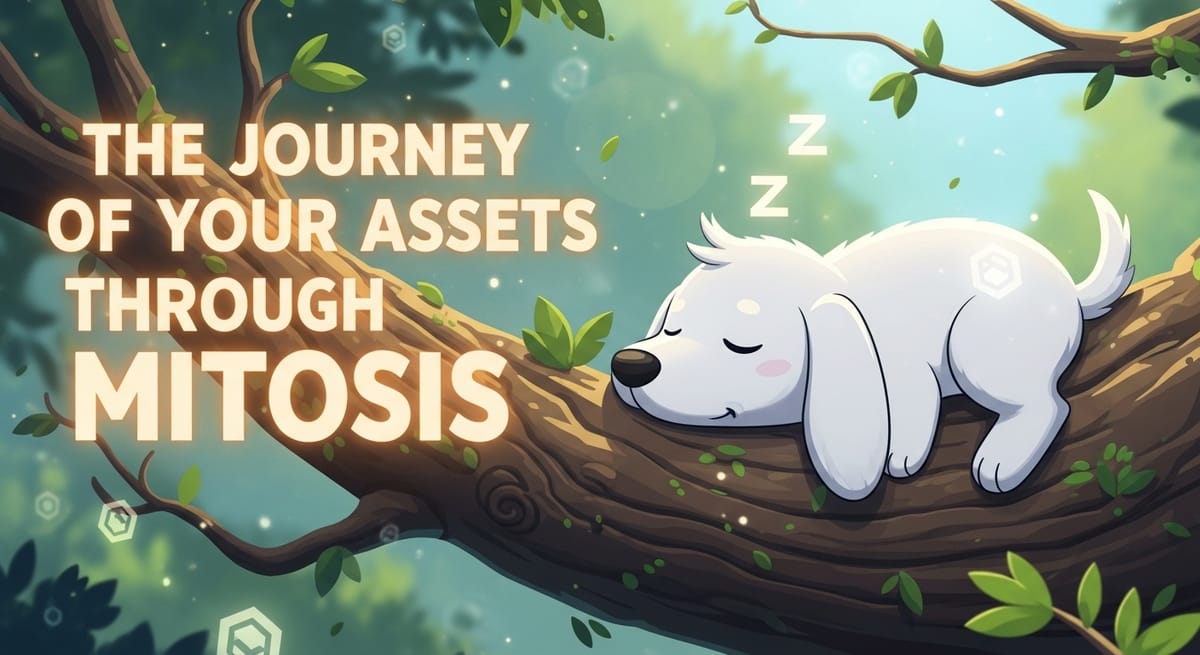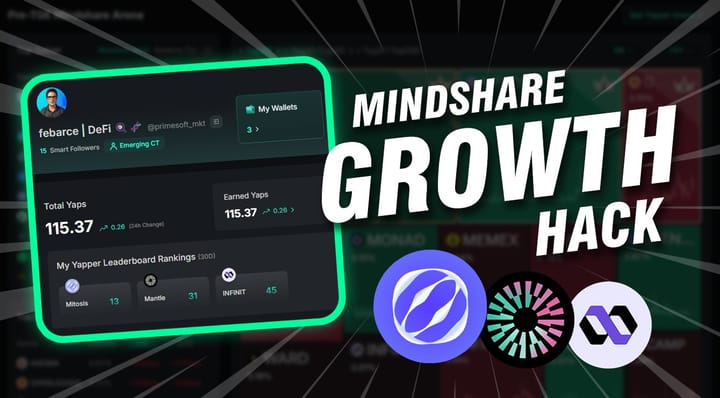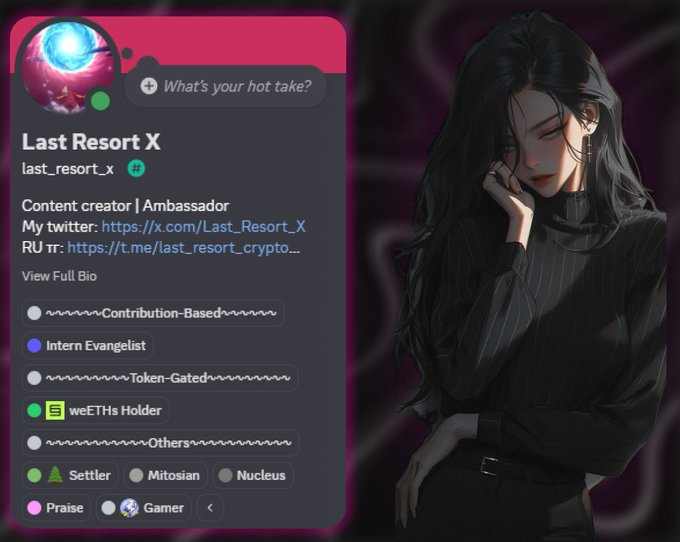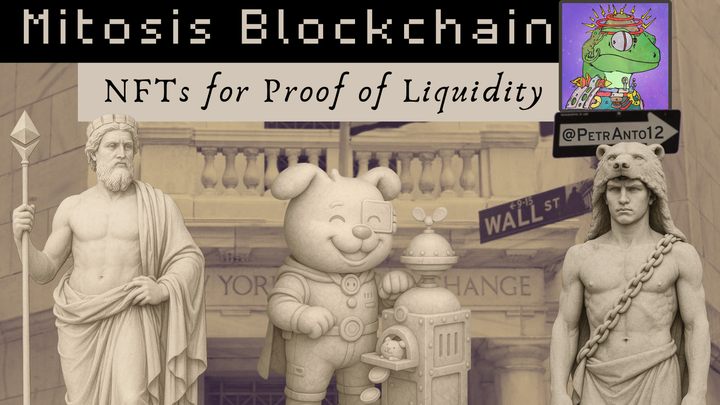The Magic of Cross-Chain: The Journey of Your Assets Through Mitosis

1. Introduction: The "Black Box" Mystery
For most Web3 users, cross-chain bridges and liquidity protocols operate like a "black box." You input your assets on one side, press a button, and (if all goes well) they appear on the other side, on a different blockchain. This is convenient, but the lack of understanding of what's happening "under the hood" can be unsettling. What exactly is happening to my funds during those minutes or seconds? Who controls them? What mechanisms protect them from loss or theft?
Understanding the lifecycle of a cross-chain transaction is not just a matter of technical curiosity. It's the key to using such protocols consciously and understanding their strengths and potential risks. When you know how the mechanism is built, you can better assess its reliability.
Mitosis aims to be not just fast and convenient, but also as secure and transparent as possible. That's why we want to lift the veil of mystery and invite you on a journey alongside your assets.
The Goal of This Article: Demystifying the Process
In this two-part article, we will trace the entire path your asset takes during a cross-chain transfer via Mitosis, step by step. We will break down each key stage, explaining it in simple terms and showing which technologies and security mechanisms come into play.
Our journey will consist of the following stops:
- Step 1: Transaction Initiation (The Starting Point). What happens when you click the "Transfer" button.
- Step 2: Sending the Interchain Message. How information about your transaction securely leaves the source blockchain.
- Step 3: Verification and Attestation. Who verifies that your message is authentic and how, and why this stage is critically important.
- Step 4: Execution on the Destination Chain. How Mitosis ensures your assets appear on the other blockchain.
In this first part, we will detail the first two steps – from your click to the moment the transaction information is securely on its way.
Step 1: Transaction Initiation – Hitting the "Start" Button
It all begins in your wallet and the interface of the application using Mitosis.
- Your Request: You select the source chain (e.g., Arbitrum), the destination chain (e.g., Polygon), the asset (e.g., 100 USDC), and the recipient's address.
- Interaction with the Mitosis Contract: When you click "Transfer" (or a similar button), your wallet (e.g., MetaMask) asks you to sign a transaction. This transaction interacts with the Mitosis smart contract on the source chain (in our example, on Arbitrum).
- Locking or Burning of Assets: At this moment, two things happen:
- You grant permission to the Mitosis smart contract to use your 100 USDC.
- The smart contract either locks these 100 USDC in its balance, burns them (if it's a wrapped version that Mitosis can re-issue), or transfers them to the EOL pool. This action is recorded on the Arbitrum blockchain and serves as irrefutable proof that you have sent your funds.
At this point, your direct involvement in the process is complete. You've signed the transaction, and now Mitosis's automated systems take over.
Step 2: Sending the Message – The "Postman" Enters the Game
Now that the Mitosis smart contract on Arbitrum "knows" that you sent 100 USDC and want to receive it on Polygon, it needs to inform its "colleague" – the Mitosis smart contract on Polygon. For this, an underlying messaging protocol is used.
- Message Formation: The Mitosis smart contract on Arbitrum forms a standardized message. It contains all the necessary information:
- Source Chain: Arbitrum
- Destination Chain: Polygon
- Recipient: Your address on Polygon
- Asset: USDC
- Amount: 100
- A unique transaction identifier.
- Dispatch to Messaging Protocol (e.g., Hyperlane): This message is sent to the "post office" – the smart contract of the messaging protocol (e.g., Hyperlane) on Arbitrum.
- Transmission via Validator Network: The "postmen" (Hyperlane validators or relayers) see this message, "seal it in an envelope," and send it through their channels towards the destination chain – Polygon.
At this stage, it is critically important to ensure that this "letter" is not opened, forged, or lost along the way. How does Mitosis guarantee its security? We will discuss this most crucial verification stage in detail in the second part of our journey.
2. Verification and Receiving Funds – The Heart of Mitosis's Security
In the first part, we sent our "letter" – the transaction message – on its way through the messaging protocol. Now comes the most critical stage: how to ensure this letter is authentic and that funds can be safely issued on the destination chain based on it. This is where Mitosis's advanced security mechanisms come into play.
Step 3: Message Verification – The Guardians of Economic Security
Simply delivering a message is not enough. It must be proven that it wasn't forged. Traditional bridges often use a small group of their own validators for this, which is a potential single point of failure. Mitosis employs a much more robust approach.
- Message Arrival: The "postmen" from the messaging protocol (e.g., Hyperlane) deliver our message to the "post office" on the destination chain (on Polygon).
- Verification via EigenLayer AVS: Before the Mitosis smart contract on Polygon accepts this message for execution, it undergoes the strictest verification. Mitosis uses a dedicated Actively Validated Service (AVS) built on EigenLayer technology for this.
- What happens? A broad, decentralized set of AVS operators, who have "restaked" their ETH as an economic security deposit, verify the authenticity of this message. They check the message data against the data on the source chain (Arbitrum) to ensure the transaction actually occurred.
- Why is this secure? Each of these operators risks their own capital (ETH). If they attest to a fraudulent message, their stake will be slashed. To deceive the system, an attacker would have to bribe or compromise a huge number of operators, requiring an attack worth billions of dollars. This makes fraud economically unfeasible.
- Attestation: Once a sufficient number of AVS operators confirm that the message is authentic, it receives an "attested" or "valid" status.
This step is a key differentiator for Mitosis. The transaction's security is ensured not by trust in a small group, but by the collective economic security of the entire Ethereum ecosystem.
Step 4: Execution on the Destination Chain – Issuing Your Assets
Once the message has been successfully verified, the final stage is fast and secure.
- Receiving the Command: The Mitosis smart contract on Polygon receives the confirmed (attested) message. It now has irrefutable proof that you locked 100 USDC on Arbitrum and that these funds should be issued to you on Polygon.
- Utilizing EOL Liquidity: Instead of waiting for the original tokens to be unlocked (which can be slow), Mitosis uses its Ecosystem-Owned Liquidity (EOL). The Mitosis liquidity pool on Polygon already has a "reserve" of native or canonical USDC.
- Transferring Funds: The Mitosis smart contract instantly sends 100 USDC from its EOL pool to your wallet on the Polygon network.
- Internal Accounting: The Mitosis protocol performs internal accounting: liquidity on Polygon has decreased by 100 USDC, while on Arbitrum it has increased by 100 USDC (from your locked funds). In the future, the protocol may rebalance by physically moving some funds back, but this is seamless for the user.
The Result: You receive your funds on the destination chain quickly and securely, as the protocol doesn't need to wait for long confirmations or complex operations with "wrapped" tokens.
Conclusion: From a "Black Box" to a Transparent Fortress
Now, having gone through the entire journey from start to finish, we can see that the "black box" of a cross-chain transfer via Mitosis is actually a well-thought-out and multi-layered system:
- Initiation is your direct interaction and the locking of funds.
- Message Sending is the job of a reliable "postman" (the messaging protocol).
- Verification is the most crucial stage, where the collective economic security of EigenLayer AVS acts as a guarantor of authenticity.
- Execution is the fast and efficient issuance of funds thanks to EOL liquidity.
Understanding this process allows one to appreciate how seriously Mitosis approaches security and efficiency. Each stage is designed to minimize risks and provide the smoothest possible user experience. This transforms Mitosis from a simple "bridge" into a true fortress for your assets as they travel across the Web3 world.
Learn more about Mitosis:
- Explore details on the official website: https://www.mitosis.org/
- Follow announcements on Twitter: https://twitter.com/MitosisOrg
- Participate in discussions on Discord: https://discord.com/invite/mitosis
- Read articles and updates on Medium: https://medium.com/mitosisorg
- Blog: https://blog.mitosis.org/



Comments ()